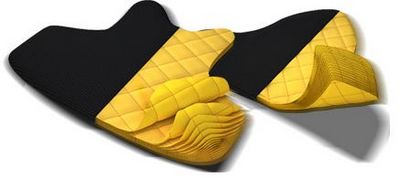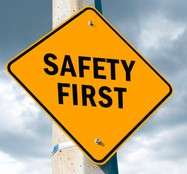We independently evaluate all recommended products and services. Any products or services put forward appear in no particular order. If you click on links we provide, we may receive compensation.
 In this article I thought it would be useful to discuss some of the ways you can protect against our beloved sharp edged friends should the situation arise. Remember, dangers come in all shapes and forms and it’s essential that when entering a high risk environment, the proper precautions are taken as to ensure that the side you’re standing on is the safe side.
In this article I thought it would be useful to discuss some of the ways you can protect against our beloved sharp edged friends should the situation arise. Remember, dangers come in all shapes and forms and it’s essential that when entering a high risk environment, the proper precautions are taken as to ensure that the side you’re standing on is the safe side.
However, as we’re all aware, guns aren’t the only high level threats that one may encounter. In fact, the predominant weapon of choice is indeed the knife. Sharp and shiny or dull and rusty, there’s no denying that the degree of harm a knife can cause is exponentially high.
But how do you protect against knives? The obvious choice is body armor. Yes, when we think of body armor, military personnel or SWAT teams donning what’s typically referred to as the bullet proof vest comes to mind. However, there are a wide range of body armor intended for different purposes and in that mix is body armor designed to protect against knife attacks. Such body armor are referred to as stab proof vests.
The structure of a stab proof vest
Firstly, it’s important to note that stab proof vests are different from bullet proof vests in not only how they’re structured but also in what they protect against. Though the ability to protect against low velocity rounds is often a characteristic of stab proof vests, this is not their intended purpose and thus should only be worn when the primary threat expected is that of a knife.
The fibers in a stab proof vest are structured to resist a knife attack whether carried out in a stabbing motion or a slashing motion. Multiple layers are constructed in a woven-like pattern preventing the vest from being penetrated in the face of an attack.
Covert vests
Stab proof vests are typically offered in the covert style. A covert vest is intended to be worn under clothing and thus, concealable. Lightweight and thinner than an overt (worn above clothing) vest, covert body armor is exceptionally comfortable to wear. With this, the wearer is able to have concealable protection which is a necessity especially when carrying out undercover operations.
 The majority of covert vests are equipped with Coolmax which distributes sweat onto a large surface area, speeding up the process of absorption. This feature is one that makes covert stab proof vests a great option when long term protection is necessary in warmer climates.
The majority of covert vests are equipped with Coolmax which distributes sweat onto a large surface area, speeding up the process of absorption. This feature is one that makes covert stab proof vests a great option when long term protection is necessary in warmer climates.
Comfort is essential when wearing protective gear as the more uncomfortable a vest is, the less likely one is to incorporate it into their everyday wear, even when necessary. The incorporation of cotton in covert body armor also works to its comfort making it very comfortable to wear directly against the skin, eliminating the need to add a layer of clothing underneath the vest.
Stab proof levels
The National Institute of Justice is the organization that provides the rating for body armor. Vests are typically characterized by NIJ Levels. In the case of stab proof body armor, the primary levels seen are a Level II and a Level III. A Level II vest offers protection against attacks carried out at 33 Joules. A Level III vest offers greater protection than a level II vest, staying strong in the face of an attack carried out with up to 43 Joules.
How a vest is supposed to fit
The way in which body armor fits should not be undermined. Body armor that fits well will stop slightly above the navel region. The reason for this is that a longer vest that covers the entire torso will be restricting and prevent the wearer from accomplishing a full range of motion. When protective gear is worn, the wearer should be able to carry out the following without restrictions:
- Jumping
- Crouching
- Climbing stairs
- Running
- Bending
- Sitting
Additionally, companies like SafeGuard Clothing suggest that it’s important to ensure that the body armor chosen is one that is neither too loose nor too tight fitting. Proper measurements will, therefore, need to be taken prior to deciding on a particular size of body armor. There are size guides available to make the process of selecting body armor easier.
Further safety advice
 Before wearing body armor, the gear should be checked for obvious signs of damage or heavy wear and tear. Vests that are in any way compromised should not be worn as they will not be able to offer the necessary amount of protection and may be counterproductive in the face of an attack.
Before wearing body armor, the gear should be checked for obvious signs of damage or heavy wear and tear. Vests that are in any way compromised should not be worn as they will not be able to offer the necessary amount of protection and may be counterproductive in the face of an attack.
It is also important to carry out a risk assessment before deciding on what level of body armor or what type of body armor needs to be opted for. Choosing the wrong vest will leave the wearer vulnerable and may be a matter of life and death.
Now, of course most of you shouldn’t need to worry about protecting yourself from knife attacks but for those who work in potentially dangerous situations I hope this article proved to be helpful. Stay sharp and stay safe!





